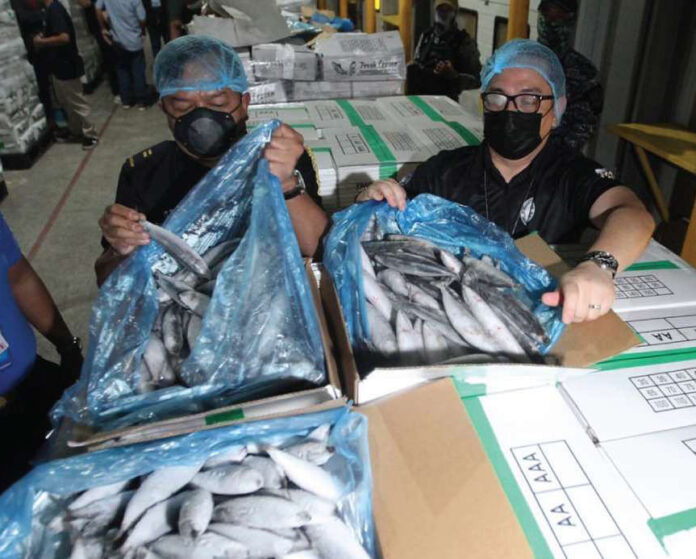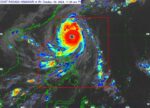Agriculture Secretary Francisco P. Tiu Laurel, Jr. on Wednesday (October 30, 2024) inspected several container vans loaded with frozen mackerel illegally imported from China.
Accompanied by officers from the Bureau of Customs and Department of Agriculture’s Inspectorate and Enforcement Office, the DA chief witnessed the opening of 3 of the 21 container vans of frozen mackerel that arrived at the Manila International Container Port earlier this month.
Pacific Sealand Foods Corp., the importer of the frozen fish, failed to produce a sanitary and phytosanitary import clearance when the shipment of an estimated 567 metric tons of mackerel were unloaded at the MICP.
“At current market prices, this frozen mackerel shipment is worth P178.5 million” said Tiu Laurel, who spent most of his working years in the fishing industry before joining DA last year.
“We issued the order earlier this year for the importation of fish to cover requirements for the closed season. This was done to monitor market supply and ensure imports won’t affect the income of the local fishing industry when the closed season ends,” he added.
The three-month closed fishing season starts 1 November in waters northeast of Palawan and from 15 November in the Visayan Sea and Zamboanga Peninsula. All three areas are spawning grounds for small pelagic fishes like sardines and mackerel. The closed season reduces fish supply.
In late April, Tiu Laurel issued an order allowing the importation of 30,000 metric tons of pelagic fish species in the last quarter of 2024 to augment supply in view of the closed fishing season. These imports must be in the country before 15 January next year. Imports arriving months before the closed fishing season starts will only be released from 1 October.
The order specified that 80 percent of the imports be for registered importers from the commercial fishing sector and the balance to fisheries associations and cooperatives. A minimum import volume of 112 metric tons, equivalent to four containers, will be for commercial importers, while the minimum import volume for fisheries associations and cooperatives will be 56 metric tons, or two containers.
Additional import volume will be determined based on an importer’s percentage share of fish landings in the last three years prior to the importation. Importers must ensure that the fish supply they import comes from reputable sources and does not stem from illegal, unreported, and unregulated fishing.







